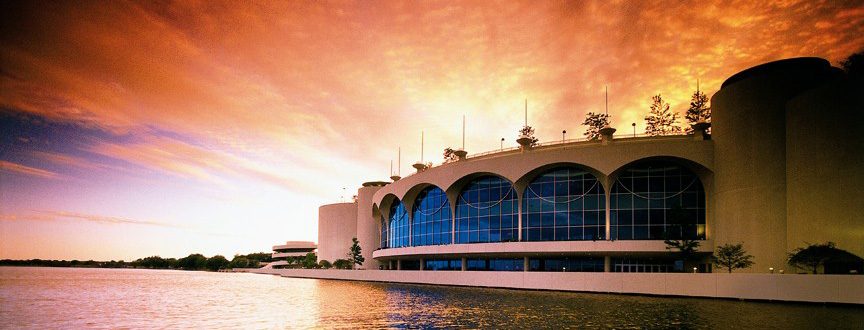June 1, 2017
Frank Lloyd Wright is widely regarded as America’s greatest architect. Wisconsin, Wright’s former home, is rich in public buildings and private residences created by the architect, including his own estate.
Monona Terrace Community and Convention Center
The tour begins in Madison, home to two unique public buildings designed by Wright. The Monona Terrace Community and Convention Center, on the shores of Lake Monona, is a recently built structure inspired by Wright’s 1938 design for a “dream civic center.” He first designed it as a cultural, governmental and recreational building, then reworked the design several times between 1938 and 1959, signing off on the final plans just seven weeks before his death. Monona Terrace was completed in 1997 on the same site that Wright had originally proposed, with his design used for the building’s exterior. Guided tours are offered daily.
Seth Peterson Cottage
About an hour’s drive north of Madison, the Seth Peterson Cottage stands on the edge of a wooded bluff overlooking picturesque Mirror Lake in Mirror Lake State Park. The only Wright-designed house in the world available today for public rental, the cottage was originally designed for a Wisconsin native with a lifelong interest in Wright’s work. The elegant yet simple structure has been described as “having more architecture per square foot than any other building (Wright) ever designed.” It can be rented for special events, meetings and overnight getaways, and public tours are given the second Sunday of each month.
Taliesin
The most notable of all of the Wright-designed structures in Wisconsin is his home and studio complex, Taliesin. Located west of Madison amid the rolling countryside of Spring Green, Taliesin is regarded as Wright’s “self portrait.” Begun in 1911 and rebuilt twice after fire damage, the home was designed to integrate with the surrounding pastoral landscape, according to Wright’s philosophy of organic architecture. It was filled with furniture designed by Wright and constructed of materials including plaster, limestone, wood and glass that were meant to mirror its natural setting. Over the 50 years that Wright lived and worked at Taliesin, the home was an ongoing architectural project, as he continued to modify it until his death in 1959. Wright used the buildings on his estate to test new ideas and spatial constructs, making them an enduring testament to his evolving views on architecture and nature. The 600-acre landmark estate includes several other Wright-designed structures. Four different public tours of Taliesin are offered from May through October.
Annunciation Greek Orthodox Church
One of Wright’s last major works, the Annunciation Greek Orthodox Church in the Milwaukee suburb of Wauwatosa was dedicated in 1961, two years after Wright’s death. The building’s circular design is a radical departure from traditional Byzantine church architecture yet retains the concept of a domed space and incorporates symbols and colors associated with the Greek Orthodox faith. Its overall design is based on a Greek cross inscribed with a circle. Public tours are available by appointment.
Johnson Wax Administration Building
Two Wright-designed buildings are located in the southeastern Wisconsin city of Racine. Opened in 1939, the Johnson Wax Administration Building still serves today as the SC Johnson’s international headquarters. More than 200 sizes and shapes of bricks were made according to Wright’s specifications to create the building’s unique angles and curves. Designed to be the main office area, the Great Work Room is the building’s most renowned feature, with slim dendriform columns supporting its roof and glass tubing used in place of conventional windows. Public tours are offered on Fridays year-round. Set on a 36-acre parcel on the western shores of Lake Michigan, Wingspread was originally designed by Wright as a residence for the Herbert Fisk Johnson family. The 14,000-square- foot house in Racine was completed in 1939 and is shaped like a four-winged pinwheel. A prime example of Wright’s organic architecture, the structure is made primarily of limestone, brick, stucco and wood, and its long, low silhouette stretches out to meet the surrounding land. A 30-foot chimney rises from the octagonal living space at the building’s center, providing five fireplaces on three levels. The Johnson family lived in the home for 20 years. In 1959, Wingspread was turned over to the Johnson Foundation to serve as an educational and conference center. Free public tours are available by appointment when conferences are not in session. Download an Explore the Frank Lloyd Trail itinerary.
Discover more at: TravelWisconsin.com


